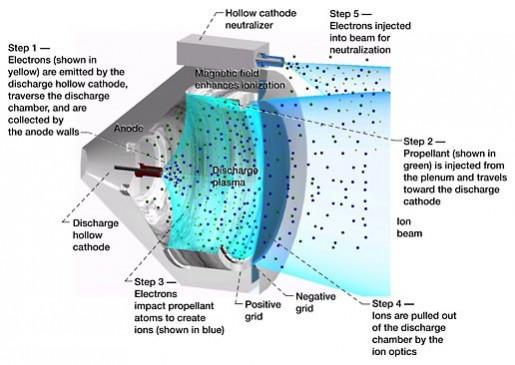China lately claimed that it's conducting tests using the "impossible" technology, none other than the EmDrive. Did this announcement make NASA pull its socks and conduct researchers regarding the same within the orbits?
Also Read: Top Space News 2016: EmDrive updates and controversies
China had revealed last month that it was conducting the tests aboard its Tiangong-2 space station after carrying it out successfully on Earth post funding researches for five years.
The controversial EmDrive space propulsion engine technology is said to function without any rocket fuel and aid astronomers in space travel much quicker than usual. This spacecraft releases microwaves in a cone-shaped engine, which helps it in moving forward and carrying out its functions, enacting like a propulsion system.

Roger Shawyer was the one to spearhead the EmDrive technology in 1999 and reveal that it could make the astronomers reach Mars within 70 days, which traditionally takes three to four months.
What added more element of controversy to this "impossible" technology is that no paper-work by China regarding it has been peer-reviewed yet.
NASA's Eagleworks Laboratory team, on the other hand, had conducted researches on Electromagnetic Drive or EmDrive earlier and submitted the paperwork for the spacecraft in November 2016.
Though this technology has been called impossible, as it denies Newton's Third Law of Motion, which states that "every action must have an equal and opposite reaction." This spacecraft lacks the exhaust, which is required to carry out an opposite reaction.
The following data were revealed by NASA's paperwork:
- The Eagleworks Laboratories created a frequency resonant cavity thruster.
- This electromagnetic thruster possessed the ability to produce 1.2 millinewtons per kilowatt of thrust in vacuum.
- NASA used electricity to create and bounce the microwaves in a copper cone which was close.
"Unlike solar sails, the EmDrive takes no propellant, with the microwaves coming from the power of solar panels," says Harold White, the principal investigator, Tech Times reported.
"The best part is that EmDrive can render space travel cheaper and faster. However, there is still a long way to go as EmDrive is in a proof-of-concept mode and requires further validation," he added.
The launch of Sputnik by Russia had the effect of kicking the US space program into high gear. If the Chinese have leaped ahead of the US in the testing and use of Emdrive technology, will the US once again pour money into the effort and overtake the Chinese? NASA is likely to try it.
After all, the principal reason that the US went to the moon was to tout the superiority of the American system, government, and technology. That's why — once Apollo was over — we essentially stopped going anywhere in deep space — except for unmanned missions.
So, the NASA Emdrive tests, which are currently under consideration may well be — and perhaps should be — fast-tracked to avoid letting the Chinese build an insurmountable lead in space propulsion technology. Otherwise, deep space could become the exclusive province of the Chinese government.
There was a space race and cut throat competition between the US and USSR in the 1960s', the same appears to be shaping up between the US and China since China declared carrying out EmDrive tests in space after seeing fruitful results regarding the same on Earth.









